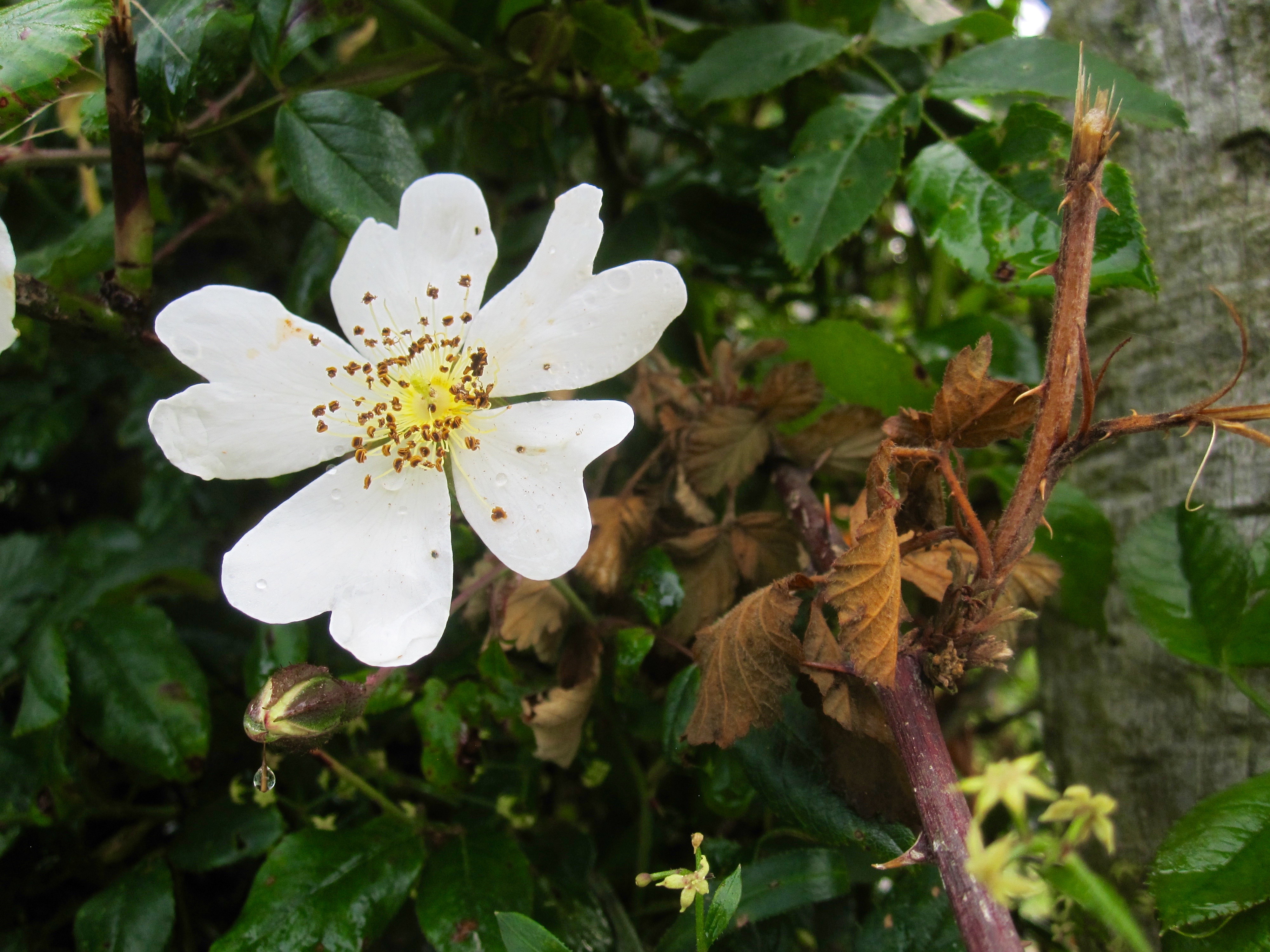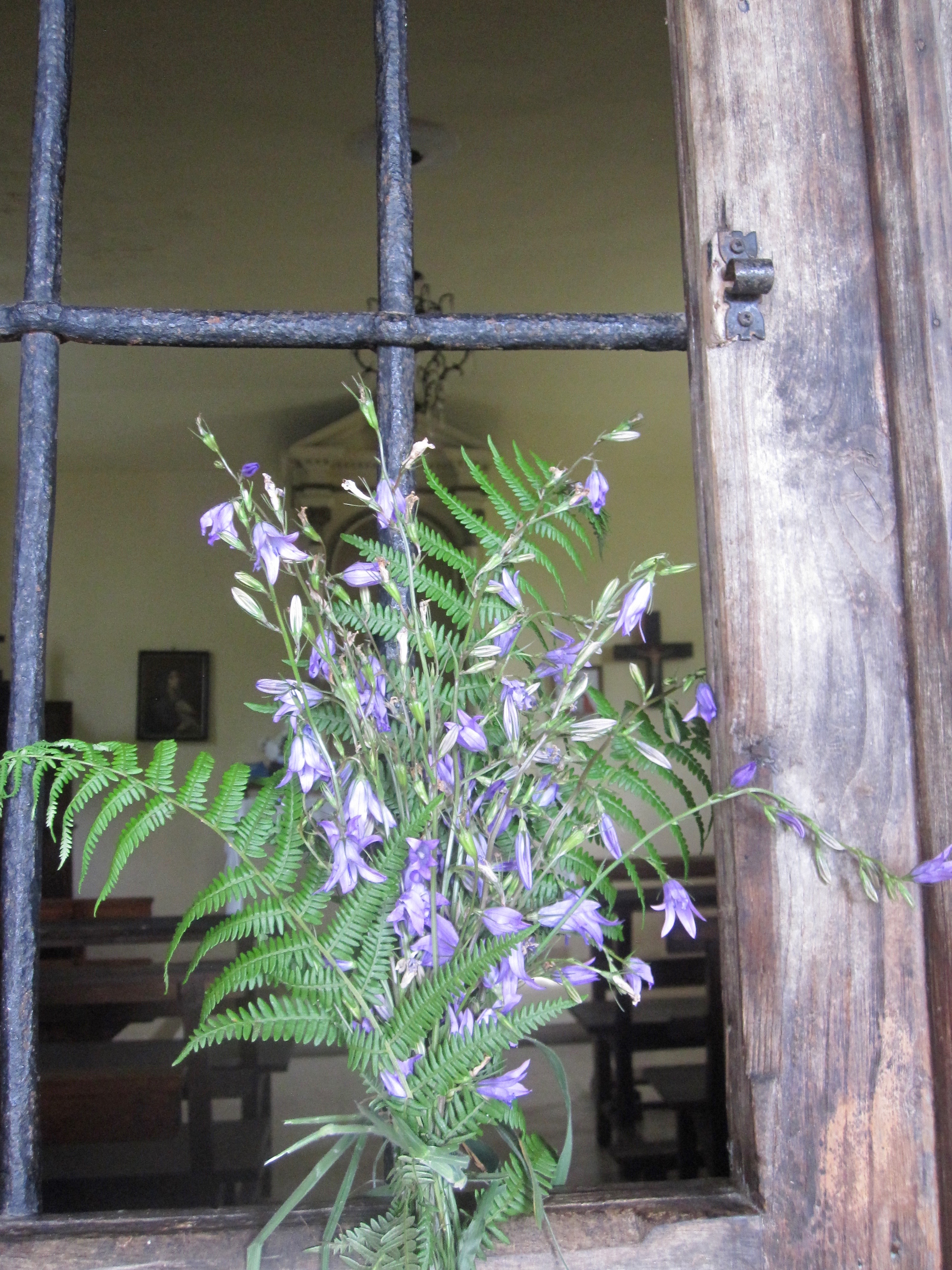Being careful of not repeating my past mistake of walking too many miles the first couple of days, I only walked to the village of Escamplero (8 miles). However, I took a detour to the Pre-Romanesque church of Santa Maria del Naranco and San Miguel de Lillo, both located on a hill above Oviedo. When I arrived, the morning sun lifted the last remnants of the mist covering the area, creating a nearly mystical atmosphere.
Santa Maria del Naranco, 9th century
San Miguel de Lillo, 9th century
After leaving the place, the path took me further up the hill through a deep ravine with many shades of green, the first of many marvelous ravines still to come on my trek. Marigold, hydrangea, roses, geranium were growing in the villages and in front of the typical Asturian square shaped granaries called Hórreo.
Ravines with fern and moss
Hórreo (granary)
Ponte de Gallegos, 13th century
By not being in a hurry, I could listen to the birds, observe the spiders in their delicate spider webs and smell the wild roses blooming in abundance. The well-marked trail with the symbol of the shell always pointing with the narrow end to the direction of the path made it easy not to get lost.
Typical marker of the way – tile with yellow shell on blue background
In comparison to the Camino in France (Via Lemovicensis) or the popular Camino Francés in Spain, where great Romanesque churches are along the way, the Camino Primitivo is a place of little chapels. Most of them were locked.
Window of the chapel Santa Ana, 15th century












